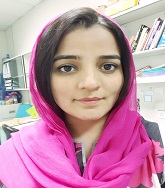
Tooba Mahboob
University of Malaya, Malaysia
Biography
Tooba Mahboob has completed her PhD from University of Malaya, Malaysia. Currently, She is pursuing her Postdoctoral Studies at Dept. of Medical Microbiology, University of Malaya. She has expertise in natural products particularly for the treatment of infectious diseases. Her work on Amoebicidal agents and their novel drug delivery creates new pathways for improving healthcare especially for infectious diseases. She has experience in microbiology, natural products and nanotechnology. She is one of the Member of South-east Asian water team as well as South-east Asian Natural product team. Her findings in the field
Abstract
Amoeba from genus Acanthamoeba comprises at least 24 species of free- living protozoa. Acanthamoeba is ubiquitous in nature existing both in soil and in nearly all water sources and supplies, which subsequently cause serious infections to humans such as amoebic keratitis and encephalitis. Treatment of such infections is a major concern due to lack of availability of effective, safe and cost-effective drugs. New drugs from natural products with less toxicity and more specificity are highly warranted. South-east Asian medicinal plants have been used against parasites and bacteria since last few decades. Pericampylus glaucus (Lam.) Merr. (family Menispermaceae) is a common road-side climber which grows widely in Malaysia, Thailand and Philippines. Leea indica (Burm. f.) Merr. is perennial shrub and widely spread in tropical and sub-tropical countries. Different fractions of Pericampylus glaucus, Leea indica and their constituents (Gallic acid, Periglaucine A and Betulinic acid) were examined as an Anti-Acanthamoeba agent. The constituents were encapsulated to develop a novel delivery system of bioactive compounds and to improve their efficacy and delivery using polymeric nanoparticles. Alkaloidal fraction of Pericampylus glaucus at 100 µg/mL inhibited cysts by 74.7%. The major constituent of Leea indica, Gallic acid showed 83% inhibition of Acanthamoeba trophozoites at concentration of 100 µg/mL, while gallic acid inhibited 69% of Acanthamoeba cysts at concentration of 100 µg/mL. Gallic acid encapsulated within polymeric nanoparticles inhibited 90% trophozoites viability after 72 hours while showed 31% inhibition of cysts whereas periglaucine A loaded nanoparticles showed 74.9% trophocidal activity and betulinic acid loaded nanoparticles exhibited 71.3% trophocidal activity. In addition, the cytotoxicity of gallic acid was reduced after polymeric nanoencapsulation of gallic acid. The results obtained in this study have clearly shown that these fractions of Leea indica and Pericampylus glaucus may use in novel treatment against Acanthamoeba infections. Gallic acid can be found in numerous plants, may be used in the development of new drugs against Acanthamoeba infections. Polymeric nanoencapsulation certainly helps to reduce the toxicity of bioactive compounds while improving their efficacy at lower concentrations.